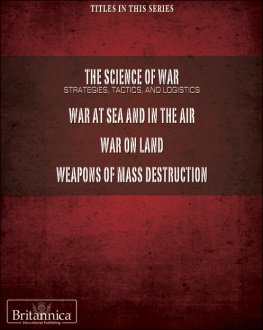POISONING PLANET EARTH
POLLUTION AND OTHER ENVIRONMENTAL HAZARDS
THE ENVIRONMENT: OURS TO SAVE
POISONING PLANET EARTH
POLLUTION AND OTHER ENVIRONMENTAL HAZARDS
EDITED BY SHERMAN HOLLAR

Published in 2012 by Britannica Educational Publishing
(a trademark of Encyclopdia Britannica, Inc.)
in association with Rosen Educational Services, LLC
29 East 21st Street, New York, NY 10010.
Copyright 2012 Encyclopdia Britannica, Inc. Britannica, Encyclopdia Britannica, and the Thistle logo are registered trademarks of Encyclopdia Britannica, Inc. All rights reserved.
Rosen Educational Services materials copyright 2012 Rosen Educational Services, LLC. All rights reserved.
Distributed exclusively by Rosen Educational Services.
For a listing of additional Britannica Educational Publishing titles, call toll free (800) 237-9932.
First Edition
Britannica Educational Publishing
Michael I. Levy: Executive Editor, Encyclopdia Britannica
J.E. Luebering: Director, Core Reference Group, Encyclopdia Britannica
Adam Augustyn: Assistant Manager, Encyclopdia Britannica
Anthony L. Green: Editor, Comptons by Britannica
Michael Anderson: Senior Editor, Comptons by Britannica
Sherman Hollar: Associate Editor, Comptons by Britannica
Marilyn L. Barton: Senior Coordinator, Production Control
Steven Bosco: Director, Editorial Technologies
Lisa S. Braucher: Senior Producer and Data Editor
Yvette Charboneau: Senior Copy Editor
Kathy Nakamura: Manager, Media Acquisition
Rosen Educational Services
Alexandra Hanson-Harding: Editor
Nelson S: Art Director
Cindy Reiman: Photography Manager
Matthew Cauli: Designer, Cover Design
Introduction by Alexandra Hanson-Harding
Library of Congress Cataloging-in-Publication Data
Poisoning planet Earth : pollution and other environmental hazards / edited by Sherman Hollar.1st ed.
p. cm.(The environment, ours to save)
In association with Britannica Educational Publishing, Rosen Educational Services.
Includes bibliographical references and index.
ISBN 978-1-61530-557-5 (eBook)
1. PollutionJuvenile literature. 2. Hazardous substancesEnvironmental aspectsJuvenile literature. I. Hollar, Sherman.
TD176.P645 2012
363.7dc22
2010051416
On the cover (front inset): Oil covered cormorant swims in polluted waters off Bahrain in the Arabian Gulf. Mike Hill/Oxford Scientific/Getty Images
Front cover background, back cover, : Industrial chimneys emitting smoke. Shutterstock.com
Interior background www.istockphoto.com/Manfredxy
CONTENTS






INTRODUCTION

Its an ill bird that fouls its own nest.
English proverb
W e live in an age of marvelsideas, people, and goods speedily fly around the world. Stores are crammed with tempting goods such as cell phones, computers, and exotic foods. But when we buy new things, our planet is paying a price, too. That price can be fragile environments destroyed by overfarming, streams poisoned by factory toxins, and filthy air from fossil fuels spewing from the trucks carrying our goods to market.
Modern humans and their industrial ways are an outsized burden on the planet. One reason is that there are just so many of us. The United Nations predicts that by 2050 almost 9.2 billion people will be living on Earthalmost four times the number of people living on Earth in 1950. It isnt just our numbers, though. We have forgotten the early childhood lesson: If you make a mess, clean it up.
In this volume, you will learn how cities like Los Angeles are frequently shrouded with brown, smoggy skies, caused by the burning of fossil fuels, especially gas emissions from cars. Acid rainprecipitation mixed with gases released from coal-burning plantskills fish and forests and damages many structures, including important monuments. Like smog, coal emissions can harm lung and heart tissue in humans. Fossil fuels also emit carbon dioxide and other so-called greenhouse gases, gases that in excessive amounts heat up the planet to unhealthy levels.

An aerial photo taken on Oct. 8, 2010, shows a reservoir of red sludge pouring through the walls of a dam at an aluminum plant near Kolontar, Hungary. The ecological disaster began five days earlier when the walls gave way, allowing waves of toxic red mud to sweep through the nearby small village, killing five people. Attila Kisbenedek/AFP/Getty Images
You will also learn how fertilizers containing chemicals like nitrogen, which plants use for growth, can end up in waterways if farmers have poor soil conservation techniques. This nitrogen can make so much algae blossom that it chokes out all other life in the water.
And then there is the problem of what to do with the ever-increasing mountains of garbage that pile up in landfills. One solution is recycling. The United States recycles about 30 percent of its solid waste, for instance. But it also makes more trash than many other nations; approximately 4.5 pounds (2 kilograms) of garbage per person are generated each day in the United Statessignificantly more than the 2.5 to 4 pounds (1.1 to 1.8 kilograms) per person that many European nations and Japan make.
Radioactive pollutants have become a major concern since the first atomic bomb was dropped on Hiroshima, Japan, in 1945. Nuclear power plants generate hard-to-store waste, and occasionally disasters have occurredmost notably, the 1986 catastrophe at the Chernobyl nuclear power plant in the Soviet Union. Exposure to radiation can cause cancer and numerous other illnesses, though it may take years for the effects of such exposure to become apparent.
About 620,000 square miles (1.6 million square kilometers) of tropical rainforest are cleared each decade. If deforestation continues at that rate, all tropical forests on Earthwhich make up the habitat of two-thirds of the planets specieswill be gone in less than a century. Overpopulation in the Sahel region of Africa has forced hungry people to farm increasingly fragile land bordering the Sahara, contributing to the problem of desertification. In 2006 the UN warned that desertification threatened the livelihoods of about one billion people.
Next page

























